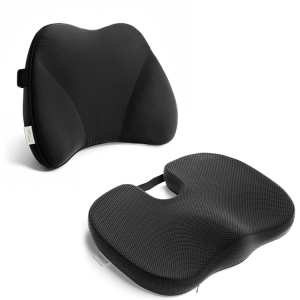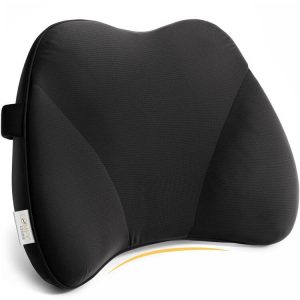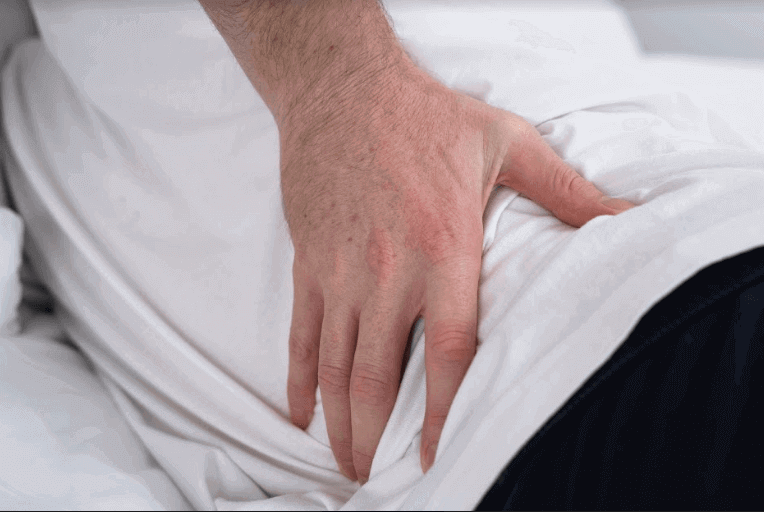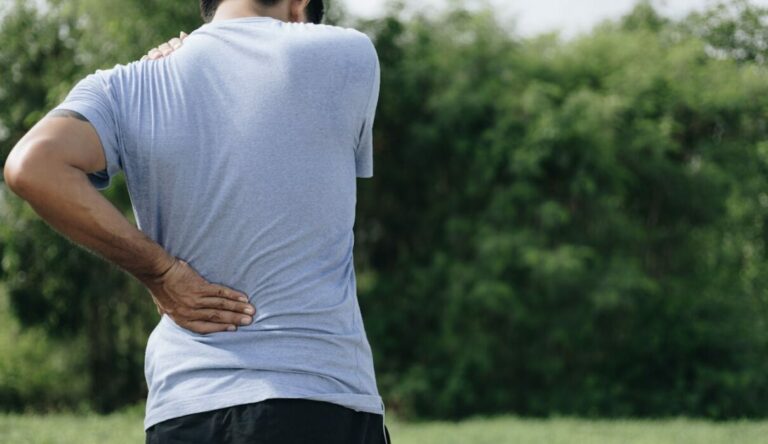Subtotal: €29.99


A long flight can take its toll on your back and neck. Whether you are suffering from a pre-existing condition or not, you should understand the effects of traveling on your neck and back.
If you are an experienced traveler, you may know a thing or two about how to avoid or find relief from back and neck pain.
Scroll down to learn more on how you can prevent inconveniences during flights!
Top Reasons Why Flying Can Hurt Your Back or Neck
Factors potentially aggravating neck and back pain while traveling include:
- Experiencing stress while traveling
- Sitting or standing in a bad position for too long
- Sleeping in an unnatural position
- Lifting heavy items continuously
- Sitting in uncomfortable seats
You can encounter all of these when flying on an airplane.
C-Shaped Airplane Seats
Airlines didn’t choose C-shaped seats for the coach and economy class to give comfort. They chose the seat to maximize the number of passengers they can safely accommodate.
Because of the seat’s lack of support to the body, it is normal for even the healthiest of travelers who travel for a long period to feel their neck and back aching.
The seat has no lumbar support. The seat pushes your head and neck forward, which makes you slouch, which is bad for the back.
Limited Space of Airplane Seats
Limited space in an airline is a very common imposition when traveling. It stresses your back and reduces the recovery of fatigued postural muscles. When this goes on for several hours, it can cause substantial lumbar spine pressure and pain.
Airplane seats also shorten your hamstrings, hip flexors, lower back muscles and hip muscles. This makes them too tight as well as constricts blood flow, which also causes pain.
Before the Flight
Some steps you can take before you board a long flight are:
Get help from your doctor when you have a pre-existing condition. Ask for a letter from your doctor that states you can do or get things such as:
- Extra cushions and blankets
- The ability to walk around during your flight
- The ability to lie down on the airplane floor and rest
- An upgrade to business class
Contact your airline for additional assistance. Let them know about your condition and they might:
- Offer you early boarding, wheelchair assistance, or other medical attention
- Accommodate you with elevator platforms and special shuttles for boarding
- Have personnel lift your luggage into the overhead bin or carry it around for you
- Allow another person to assist you through security and when you board the plane
Get a smart schedule
You may want to book a flight at the time of the day when there are fewer passengers. This allows you to move around freely and get out of tight positions.
Travel light
The more weight you carry around the more strain it puts on your back and neck. Pack fewer or check your bags in to avoid having to lift them into the overhead bin. Don’t be shy to ask for assistance.
Bring Medication
You might want to bring pain killers and other medications to prevent inflammation, pain, and other feelings of discomfort.
Exercise
Workout and keep on top of your exercise regimen a couple of weeks before traveling. Muscles tend to go through spasms in tight spaces when they haven’t been worked out in a while.
During the Flight
Some things you can do during your flight to reduce back and neck pain or your chances of experiencing it are as follows:
Move around
This is best achieved by getting an aisle seat on the plane. Sitting on the aisle seats gives you the freedom to move around more without causing inconvenience to others.
It also helps get rid of the stiffness in your muscles after sitting down for too long. Do some stretches in at the back but make sure you’re not getting in anyone’s way.
Loosen up your muscles by applying a hot or cold compresses. First, use the former to minimize stiffness, and then use the latter after sitting for a few hours to cool inflammation and pain.
Recline your seat
Reclining your seat enables you to support your body weight through the backrest instead of your spine, thereby decreasing the pressure placed on it.
Use neck pillows and back support accessories
You may need to experiment with various cervical travel pillows or back support accessories to find what works best for you.
Memory foam pillows
Memory foam pillows work by cushioning the neck to provide support and comfort on long journeys. By cradling the neck, the pillow's materials and design allows for support on all sides of the head, ensuring that the neck rests in place without being placed in an unnatural position
Lumbar support accessories
The lower portion of the spine, just above the buttocks, naturally curves inward toward the belly (the lordotic curve). Lumbar back support helps promote good posture by simply filling in the gap between the lumbar spine and the seat, supporting the natural inward curve of the lower back. An example would be a lumbar pillow.
Keep proper posture
Along with sitting properly, keep an eye out for your posture. Request anything that can help you if you find that your legs are not at the right angle when sitting.
Stay hydrated
Staying hydrated can be the difference between a good trip and a horrible one. This is because the spinal disc is prone to damage when the spinal disc’s inner gel becomes dehydrated. That is why you must always get enough water, even when not traveling.
After the Flight
If you’re suffering from neck or back pain after your flight, it’s not too late. There are steps you can take to ease the pain. These include for you to:
Try yoga
According to various studies, yoga helps relieve lower back pain; even more effective than regular bank function-improving routine.
Keep moving
If you find yourself in pain after a long flight, avoid sitting down for a long period.
Sleep smart
Your sleeping position can have a great effect on your back’s health. Try to sleep in a relaxed fetal position on your side with your knees bent. Use a small pillow and place it under your neck which will help keep your spine in alignment. You can place another pillow between your legs to help keep your top leg from moving forward which can twist your lower back while you’re sleeping.
5 Stretches That Relieve Neck and Back Pain
One-Arm Pump Up Stretch
With this simple pain-relief exercise, pump your right fist up above your right shoulder. Reach up through your right fist, and ground down through your right hip. Feel a stretch along the right side waist. Lean more towards the left for a little bit more stretch. Hold this for a few breaths, and then switch sides.
Chin Jut
Simply just your head and chin forward as if you’re trying to touch a button in front of your chin to press play. Then, bring your head, neck, and chin as far back away from the button as possible. Repeat this 10 times. This exercise is great to improve posture and align your cervical spine.
Shoulder Shrug with Head Turn
Shrug the shoulders up towards the ears as high as you can. Then release the shrug and turn the head quickly to the right.
Bring the head back to the center, shrug the shoulders up again, and then turn the head quickly to the left.
Repeat this 5 times per side. This exercise helps increase mobility in stiff shoulders and overworked upper arms from loading luggage or carrying a backpack.
Single Knee Hug & Extends
While sitting, hug your right knee in towards your chest. Pull it in as far as you can while keeping your left foot on the ground. Then extend the right leg in front of you and flex the right foot to feel a stretch up the back of the right leg. Repeat this 10 times on the right, and then switch to the left side. This exercise will help improve circulation in your hips and lower body.
Flex & Point
Extend both legs out in front of you a few inches above the ground and point the toes. Then flex the feet and lower the legs back down. Point the toes to lift the straight legs, and then flex to lower back down.
Repeat this 10 times, swiftly moving through the exercise. You can do this exercise one leg at a time or both legs at once to stretch the calves and hamstrings. This will help to strengthen and lengthen the lower body that may otherwise feel cramped throughout your travels.
Verdict
While travelling is fun, the process of getting on a plane and waiting until you arrive to your destination may lead to neck and back pain. Investing in a knee pillow or a lumbar support pillow allows you to travel without compromising your posture.
You’re only a few dollars away from a stress-free travel escapade!






